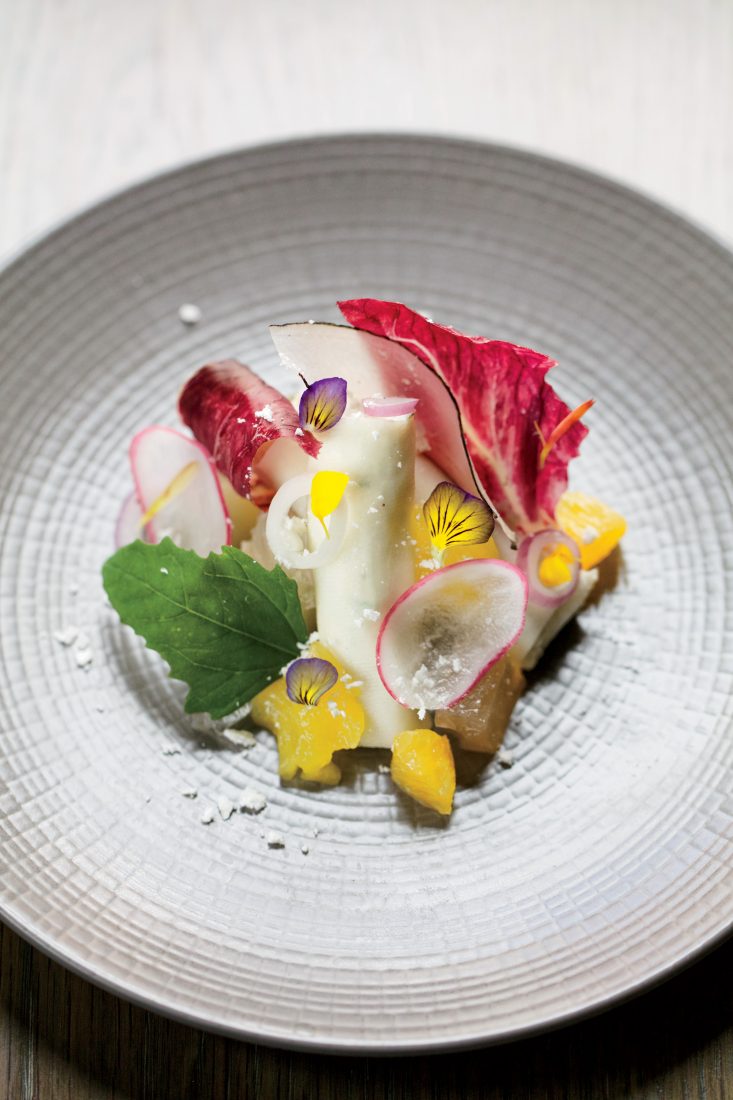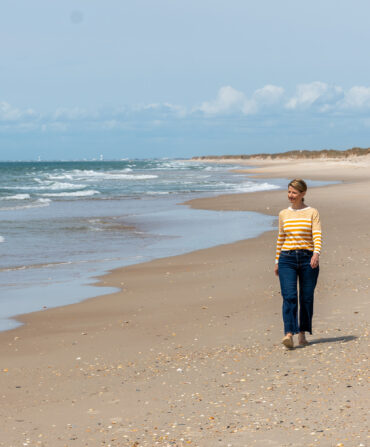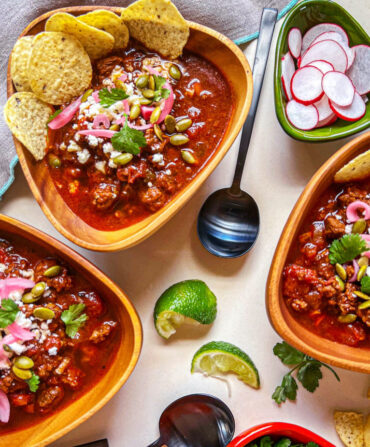“Austin isn’t the South,” said the nice lady who squatted beside me near turn four at the Blood Shed, a flat-track Roller Derby venue on the industrial fringe of Austin, Texas. As the jammer for the Hotrod Honeys leaped over a prone Honky Tonk Heartbreaker, and a young girl in a tutu held high a sign that read YOUSE YOUR BIG BOOTIE, my new friend, a native of North Carolina and a fist-pumping Texas Rollergirls league fan, told me that she knew the South. And Austin was not the South.

Jody Horton
Chef Michael Fojtasek.
Instead of arguing, I shared a budding theory, developed over a long weekend: Austin is neither here nor there. It’s a liminal city, where the fecund South peters out and the arid West picks up. A cultural frontier where freethinking triumphs, hidebound identities falter, Kinky Friedman is a deity, and breakfast tacos are sacraments, Austin rejects and embraces stereotypes with the same vigor with which it confounds critics and champions. As I mused, my friend looked away, focusing instead on a skater nicknamed Kategory 5, whipsawing through the scrum, throwing elbows, and lapping Heartbreakers.
That afternoon roller-rink conversation about identity and topography proved an ideal prelude to dining at Olamaie, a coffer-ceilinged bungalow restaurant, outfitted like a yacht stateroom in subdued taupe and glossy white, set alongside a CPA office in a onetime head shop near the University of Texas campus. Co-chefs Michael Fojtasek and Grae Nonas take great advantage of the geographical remove and cultural freedom that Austin affords, interpreting the food and drink of the South with a playfulness and grace that befit their adopted city.
Working the margins comes honestly to Fojtasek, a Texas native with Tennessee roots, and Nonas, a New Englander who claims his new home with the zeal of the converted. They bonded in the kitchen at Son of a Gun, a Florida fish camp send-up in Los Angeles, where the money appetizer is, counterintuitively, a ham plate with hush puppies. Book an Olamaie table for lunch, and the Fojtasek-Nonas rendition translates as Benton’s country ham from Tennessee, folded into an origami of garnet ribbons, served with a knoll of prim pimento cheese and a tumble of salt-freckled hominy hush puppies.
Follow with a chilled salad of sweet Texas crab, studded with what taste like citrus gummies, and you have a postmodern country club lunch. Pivot toward the meat loaf instead, and the frame shifts to twenty-first-century boardinghouse fare. Bezeled with gems of house-made mushroom ketchup, nestled in a drift of mashed potatoes, accented by a toss of pole beans, that tile of ground beef looks and tastes like luxe farmhand cookery. Instead of hewing to one narrative, Olamaie showcases various strata of Southern life from high to low, proving that New Southern cuisine, now in its third decade, has a few more lop-eared bunnies to pull from the top hat.

Jody Horton
gg0416_fork_04
Diners unwind on the back porch.
No matter when you show, keep an eye out for the bourbon pecan milk punch on the daily drinks roster. It tastes, in the best possible way, like melted butter pecan ice cream. Thanks to a generous pour of bottled-in-bond whiskey and a tannic undertow of pecan, it’s refreshing rather than cloying. Enjoyed on the plantation- shutter-framed back porch, as well-fed squirrels scamper the decking, the combination of bracing ham and soothing cocktail jump-starts an evening.
Dinner indulgences at Olamaie come fast and furious. They come with sly context, too. Snapshots of four generations of Fojtasek women—from Michael’s great-great-grandmother to his mother, all with the given name Olamaie—decorate the walls. Arrayed in a hallway, they recall the black-and-whites your great-aunt stacked higgledy-piggledy in the den. Positioned demurely along a far wall, they evoke the daguerreotypes of forgotten ancestors that flanked your mother’s dressing table.
Guests are left to wonder which women might have inspired their favorite dishes. Did the young lady in the princess skirt stir a potato salad that inspired Olamaie’s salt-roasted, smoked, and fried potato version, cloaked in a blanket of melted Brazos cheddar so that it looks like a miniature Christo sculpture? See that toddler with the pensive look and the cute white booties? Did she grow up to be the sort of cook who roasted chickens on the bone and carved the breasts from the carcasses? That’s what Fojtasek and Nonas do after they tuck a stuffing of drumstick and thigh meat beneath the skin. In the execution, they all but redeem the chicken genre.
Time at Olamaie begs questions. The most compelling might be: From whose spiral-bound cookbook collection did those fried blue cornbread lozenges spring? Floated in country ham potlikker, topped with green strawberry relish, scattered with shrimp boil powder, that dish proves with each queer and lovely bite that, out here in Austin where the South gives way to the West, much can still be gained when chefs respectfully and playfully reinvent the cooking of the women who came before them.








